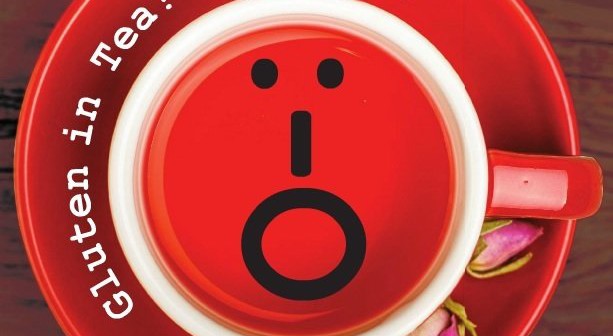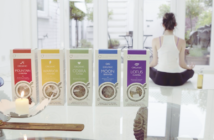Going gluten-free can challenge a tea devotee
It’s everywhere!
Gluten, that is. And so is the proliferation of “gluten-free” products clamoring for our attention on grocery shelves.
So, what gives? Why all this focus on gluten? And what is gluten in the first place? And, more importantly, how in the world does it relate to drinking tea?
First things first: gluten is a composite protein found in some grains, primarily wheat, barley and rye. Sounds harmless enough, but the human digestive tract has only been encountering cultivated wheat for around 10,000 years—not nearly enough time in evolutionary terms to fully adapt for some people, especially those of European descent.
Still, that leaves tea out as a concern, right?
Yes and no. When it comes to gluten, surprises abound.
Single-origin tea is an inherently gluten-free food—Camellia sinensis in its pure form doesn’t have any gluten. But as soon as multiple ingredients show up on a tea’s label, the chance that gluten can be lurking within goes up. Tea lovers who prefer flavored blends have to keep a wary eye on labels if they’re concerned about gluten. The most likely source in a blended tea is barley, but wheat is also a rare, yet possible ingredient. Rye, however, hasn’t turned up on any teas we know of—yet.
All of this is notable because the incidence of people who are sensitive or downright intolerant to gluten is on the rise. While it’s difficult to put exact numbers on how many people are affected, since many haven’t yet been properly diagnosed, estimates range anywhere from 1 percent of the U.S. population all the way up to one-third who might suffer with some kind of ill effect.
“The prevalence is definitely going up,” confirmed registered dietician Lori Rowell Welstead, MS, RD, LDN, a clinical dietician at University of Chicago Medicine.
The reasoning behind the rise is still being studied, but while the scientists wrestle with the data, a lot of people have begun to cut gluten from their diet either because they think they should, because they’ve learned that they feel better without it, or because they have celiac disease. While a gluten intolerance typically ranges from mild to painful, celiac disease is on an entirely different level. With celiac disease, even a small amount of gluten can damage the villi, small protrusions contained in the lining of the small intestine, and reduce a person’s ability to absorb nutrients from their food.
“People with celiac absolutely need to be gluten-free,” Welstead said.
Being able to eliminate all sources of gluten can be very challenging. Unless an item states up front that it’s gluten-free, every ingredient on a prospective product needs to be checked to ensure a contaminant-free diet. And even then, there’s still a risk of cross-contamination unless a food has been certified gluten-free. Happily, this third-party certification process is a growing trend in food manufacturing.
Part of the reasoning for this is that the Food and Drug Administration will be requiring new standards and labels for foods and beverages deemed gluten-free by August of 2014. At that point, being sure that you’re drinking gluten-free tea will get a lot easier.
What to do until then? “See if the tea brand will claim that it is gluten-free—certified gluten-free, that is,” Welstead recommends. “They third-party test it. That’s really the gold standard when it comes to testing a lot of foods.”
Other than that, Welstead says to watch for the word “malt” or “malted,” products derived from barley, and also for teas that might have gluten hiding in the catch-all term “natural flavorings.”
If it’s still difficult to tell, Welstead advises taking a peek at a tea manufacturer’s website or their FAQs to see if they reveal whether their products contain gluten or not.
Another area of concern is bagged teas; while gluten might lurk in a flavored tea blend, it could also be present in a pure tea that’s packaged in paper filters. Gluten-based adhesives are sometimes used to seal tea bags, and this information wouldn’t be available on the ingredient list. So as convenient as bagged teas might sometimes be, it’s better to go loose-leaf if you’re avoiding gluten—and you’ll probably have a better cuppa, too.
As time-consuming as it is, the only truly effective way to live a gluten-free life is to be hyper-vigilant about what you eat and what you drink. Read labels like they’re the @BritishMonarchy’s tweets.
“I just think like with anything, people need to be conscious of what they’re consuming,” Welstead said. “You have to be your best advocate of what you’re putting in your mouth, whether it’s eating or drinking.”
And for tea lovers who need or want to stay gluten-free, knowing what to look for on a label is the key to enjoying a truly healthy cup of tea.




